On the road to becoming the Detroit of agriculture.
Colleague and Christchurch based technology strategist Ben Reid, recently tweeted that New Zealand is in danger of fast becoming the “Detroit of Agriculture” – a rustbelt left behind after production has moved elsewhere.” Unfortunately, I am inclined to agree. With technologies, science and new business models evolving, accelerating and converging at current breakneck speeds, industries globally – from banking, transport, accommodation and healthcare are having the rug pulled right out from beneath their feet. And sadly (at least for New Zealand farmers), agriculture, our economic mainstay, is next up on the chopping block. Fast en route towards becoming a sunset industry. Overtaken and displaced by disruptive technologies, science breakthroughs and new business models. And the people at the helm? Not the people on the inside like our dairy farmers, apple breeders and savvy winemakers. But by sneaker wearing tech millennials and wealthy Tesla driving Silicon Valley venture capitalists and well funded research agencies. Most of whom have no background in agriculture (at least in the traditional sense) nor affiliation with NZ. A very scary thought for NZ. For our farmers, for our policy makers and for every New Zealander who has indirectly benefited from the export revenues traditional pasture based agriculture has afforded us since our very existence as a new world nation.
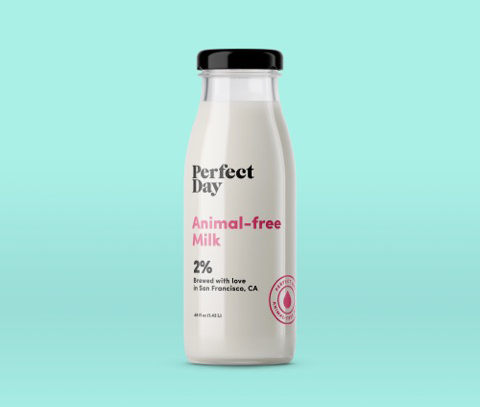
Smart Farming just delays the inevitable.
I’m not talking about the threat of technologies affording precision agriculture its day in the sun like sensors, crop yield monitors and satellite imagery. Or smart farming hardware/software systems enabling our farmers and growers to digitalise, monitor and measure and improve current conventional farming practices with more efficiency. Yes, these technologies are useful and highly beneficial. They help farmers improve productivity (think crop yields) efficiency (think energy and water use) and sustainability (think less effluent, emissions and healthy soil). And we in New Zealand are, thankfully, well ahead of the pack globally when it comes to our adoption rates of this type of on farm, pasture based technology. But these technologies are not disruptive to agriculture.
Why? These technologies are designed for a living breathing moo cow. A pasture (or cage) roaming egg laying chicken. A spring leaping lamb. A paradigm based on outdoor fruit orchards and picturesque vineyards. And vast acreages of monoculture vegetable fields. Technologies designed for a system that will fast become to food production what the cassette type has become to Spotify. A paradigm on the brink of extinction.
I’m talking about the threat of technologies and innovations that are currently designing the NEW world of agriculture and food production. Agriculture 2.0. Lab manufactured and bio-printed animal and plant proteins. Indoor and vertical crop production (of almost any variety). Next generation of soil and seed technology negating the need for GMO and pesticide use. CRISPR for food (clustered regularly interspaced short palindromic repeats) and open sourced digital agriculture. Funded by venture capitalist coffers with more than New Zealand’s entire economy. A new agricultural paradigm enabling everyone on the planet to eat ethical and sustainable versions of tasty meaty and juicy protein. To consume and even grow environmentally friendly and nutritious versions of fresh produce when they want. Where they want. Whatever the weather is doing. A system that New Zealand’s conventional agrarian based agricultural model – Agriculture 1.0, is wildly ill suited to. But the only system designed to feed a world of 8.6 billion people whilst keeping the planet intact and without the need to displace even more of our precious rainforests, native forests and eco systems. No matter how smart and efficient our farmers become. Nor how smart on farm technology becomes.
Over the past 18 months I’ve already written about how the cow that has so lucratively helped bolster NZ’s bottom line for decades was about to be disrupted by tech entrepreneurs, mainly in Silicon Valley. Start ups like Impossible Foods, Memphis Meats, Kite Hill, Willow Cup and Perfect Day (previously branded Muufri) are now successfully producing tasty, healthy and environmentally friendly protein, milk and dairy product alternatives and substitutes such as beef, chicken, milk and dairy products that taste like the real thing, look like the real thing. Except without the animal.
Similarly, Hampton Creek and Clara Foods (amongst a handful of others) are now reinventing eggs and tasty egg products like mayonnaise – without the chicken. And indoor and Vertical Farming start ups like Aero Farms, Gotham Greens and indoor shipping container start up FreightFarms are redefining the very essence of what environmentally friendly, healthy and locally produced arable crop farming looks like. Without rolling green pasture in sight.
But since these stories were published, the pace of disruption to New Zealand’s ag sector has accelerated – almost exponentially. Agtech start-ups displacing poor Daisy the cow are popping up faster than I can keep up with. Now not even our wine industry or fisheries – seemingly safe bets – are immune. San Francisco start up – Ava Wines – is busy engineering top quality wine with no grapes or fermentation that even revered wine masters like Bob Campbell would be hard pressed to tell the difference. Excuse the pun. Co founder and biologist, Alex Lee, says Ava’s mission is to recreate the wine experience in the lab using science without having to recreate the resource and land intensive process. “Our pursuit of the molecular reconstruction of food will help push the envelope of the food tech revolution”. Mature, earthy notes with delicate bubbles and savoury flavour profiles without a grape or water intensive irrigation system in sight. Cheers to that!
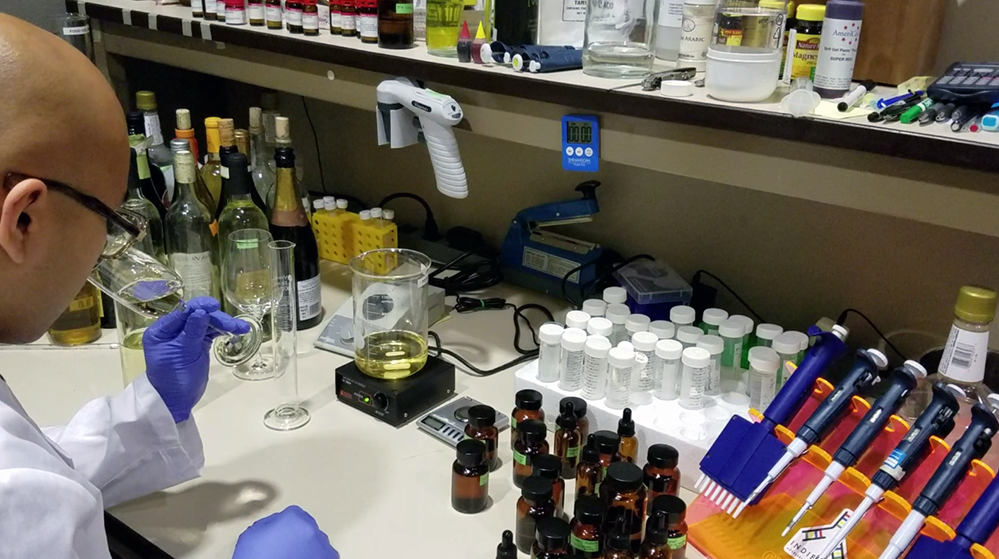
Ava Wine Scientist at work
New Zealand’s cash producing vineyards might soon be no more than defunct yet picturesque tourist destinations.
Similarly, New Wave Foods, another Silicon Valley start up (enough already!), is mastering the art of producing, using biochemistry, plant based shrimp and seafood alternatives that are healthier and better for the environment. Miles away from the depths of any ocean. “It is our mission to create food that is healthier for us and better for the environment while providing ingredients for outstanding culinary experiences” says the small but rapidly growing company.
And don’t even get me started on novel insect protein start ups that are eating into our NZ’s animal protein derived competitive advantage. New kids on the block like Exo and Entomo Farms are using lab product cricket factories to produce sustainable and clean forms of nutritious protein alternatives for health-conscious consumers rebelling against the dirty and environmentally taxing cow. God. Forbid. Thank goodness at least one forward thinking Kiwi start up, Anteater, has seen the opportunity in this space and is helping to put NZ on the map of Ag 2.0. Where are the rest?
These are the technologies disrupting agriculture. Not the latest smart farming apps. Those are merely stop gap, band aid solutions that will only help our farmers in the very short term. But they, too, will become as redundant as quickly as they were developed. Granted, not all of the aforementioned start ups have hit the market at scale, and some are still in R&D phase. But their potential to wildly disrupt conventional agricultural players over the long term should not be dismissed by even the most niche food or on-farm producer.
Organic Crops – Our panacea?
But that’s ok, I can hear many of our leaders telling themselves. We might be losing the protein battle, but we will still need to grow some outdoor crops in this new agricultural and food paradigm, right? And New Zealand can make up for lost ground here. Like better positioning and leveraging our farmers’ clean, green and organic, non GMO credentials as a way forward for competitive advantage. Wrong. Oh so wrong.
The very same genetic engineering, technology and science that once brought GMO, drought, herbicide, and pesticide resistance traits to the market are now being used to produce far superior non GMO strain of seeds, healthy plant probiotics and microbiomes (yes you read right) and digital plant recipes, that are not only productive and nutritious but also incredibly more environmentally friendly and sustainable than their wayward traditional counterparts. In the mass markets that need them – like the USA, a nation crippled by GMO and ready to rebel, as well as rapidly expanding Asia. Is New Zealand ready to compete with such an attractive competitive offering?
For example Indigo Ag, the latest darling amongst the agtech VC community, and New Zealand’s own, Biolumic and BioConsortia have developed technology that enables plant seeds to be bathed in carefully crafted concoctions of light spectra or ancient microbes, bacteria and fungi to make plants healthier, hardier, and more drought resistant without the need for pesticides, herbicides and fungicides. Think light treatment and probiotics for plants. A simple concept but one that has the potential to attack huge problems like world famine, GMO or the global food supply in a dramatically new and healthy way.
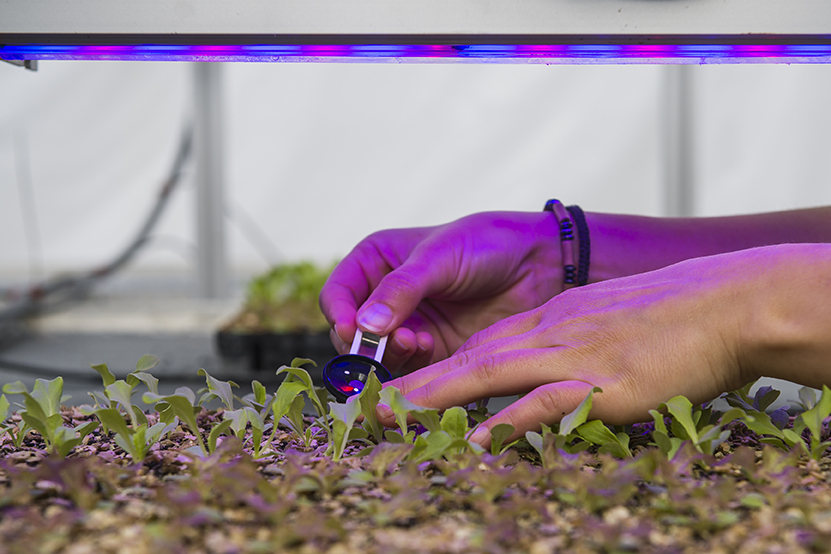
Similarly, AgBiome has developed a proprietary organic fungicide application using the plant’s own microbiome that is effective against a broad range of fungal diseases. Early trials indicate its efficacy is comparable to the potency of leading chemical solutions and up to twenty times more effective than existing organic solutions on the market. Plant bacteria may finally provide its own salvation enabling the rapidly expanding population’s growing global crop needs to be met without side effects like pollution, environmental degradation, chemical pesticides and toxic residues.
Such advances in biotech, CRISPR and genomics are undeniably a crucial and welcome development in the world of global food security and food health. But they also have huge potential to render the need for healthy, safe non GMO fruit and veg crops like New Zealand’s shipped from afar almost redundant. A scary thought for our horticultural sector.
STEM stealing the thunder
Beneath this swag of savvy Ag 2.0 start ups it’s clear that a common theme is emerging. Experts in STEM (science, technology, engineering and math) are sowing the seeds for a sustainable, profitable and ethical protein food supply. Biochemists, plant biologists, DNA analysts, food scientists and geneticists. Not stoic, rugged Swandri wearing Kiwi farmers labouring on the land. Sorry to say. Unfortunately for New Zealand.
Patrick Brown, CEO and founder of Impossible Foods is a medical doctor and professor or biochemistry. Ava Wine’s founder Alec Lee, a bioengineer. New Wave Food’s founders, Michelle Wolf and Dominique Barnes, are material scientists and a marine biologist respectively. And Geoffrey von Maltzahn, Indigo co-founder and Chief Technology Officer, holds a PhD in biomedical engineering and medical physics. The list could go on. But you get the point.
Venture capital and research legitimizing Ag 2.0
But it’s more than just technology and science itself that’s disrupting the very fabric of New Zealand’s agricultural system. It’s the speed at which these are developing footholds and gaining acceptance in the global marketplace. Foods and methods of agricultural production, once thought of as unthinkable, even just a few years ago, like bio printed meat and high rise farming are now sprouting up faster than you can say Jack Robinson. Before long they will be mainstream – at a cost far more appealing to price conscious consumers than our current dated offerings.
State of Indoor Farming Report 2016 indicates the number of US vertical farming companies on the market has risen from one in 2005 to thirty six in 2015. Sixteen just in the past two years. And indoor container farms openings have jumped from one to twelve since 2015, driving local, distributed and sustainable farming within the most concrete of jungles. At a cost cheaper than conventional chemical laden field grown alternatives or even my local markets in New Zealand. Beyond Meat’s 100% plant protein “chicken” and “beef “ substitutes are two to three times cheaper to buy at my local Whole Foods in San Francisco than grass fed or free range conventional alternatives. And chefs in SF and NYC are charging between $12 to $19 for Impossible Food’s hot off the grill “Impossible Burgers” of varying sizes – no more than what you’d pay for one a Burger Fuel Bacon Backfire. Some would argue, tastier too.
These costs are on the continual decline too. Impossible Foods, along with cultured cell real meat alternatives like MosaMeat and Memphis Meats say their products will compete on price with conventional beef as production scales up. Then it will be a no brainer for the everyday price conscious consumer as to which meat we want to throw on the summer barbie.
What’s more, jaw dropping levels of venture capital, agtech accelerators and research institutes, primarily based in the US and Europe, are further fast tracking the progress, cost competitiveness and equally important, legitimacy, of tech players fueling the Ag 2.0 paradigm.
According to BloombergMarkets, venture capital flooding into the agtech sector (protein, food and seed and crop technology) has reached record heights. A $25 billion in 2015. A staggering 15% of NZ’s total GDP for the same period. 15%! Impossible Foods, Modern Meadow, Beyond Meat and Hampton Creek attracted $183M, $55.4M and $40.5M million in VC backing respectively in the last year alone says CB Insights. Indigo Ag, a hefty US$100M and Hampton Creek received a healthy $120M in past 22 months. Major backers include Bill Gates, Koshla Ventures, Method’s Adam Lowry, DNS Capital and IndieBio. Tyson Foods is even vying for a slice of the pie in the new world of meat. Happy to cannibalize its own traditional food and meat product offerings by doing so! A private report just released by AgFunder and BCG suggests even more mind-blowing figures for 2016 year end are in the pipeline – not to mention the years to come. How on earth will NZ ever stay afloat with these numbers?
BioConsortia, New Zealand innovator of microbial solutions for natural plant trait enhancement and crop yield improvement, recently announced it raised $12 million this year for future growth. Unfortunately for New Zealand, no other Kiwi players with the potential to help catapult us towards Ag 2.0 competitiveness are in sight.
If that’s not all, VC backed research labs and consortiums specifically focussed on alternative protein and plant based R&D are also adding fuel to the fire for traditional ag players, rapidly eroding New Zealand’s future competitiveness. AgFunder recently identified 90 resources and programmes available to startups in the agtech sector— from accelerators to incubators to pitch competitions – to fast track their success and legitimacy. And this number is rising every time I visit their website.
New Harvest Foods, Indio Bio and Berkley Biolabs are amongst a handful of research platforms helping to accelerate breakthroughs in cellular agriculture and alternative protein sectors, as well as fund promising and ground-breaking research for protein alternative up and comings. New Crop Capital, launched in 2016, has $25M specifically to invest (along with other investors) into early-stage companies researching the plant-based and cultured meat sector. And Power Plant Ventures the world’s largest vegan venture fund has $42M it plans to invest in early stage visionary companies using technology and plant based nutrition to re-architect our food system sustainably and ethically. Memphis Meats, Perfect Day, Willow Cup and Clara Foods are just some of the hopeful beneficiaries who have enjoyed some of this R&D cash injection. Fonterra’s business model based on pasture grazing milk products could become the next Kodak in no time.
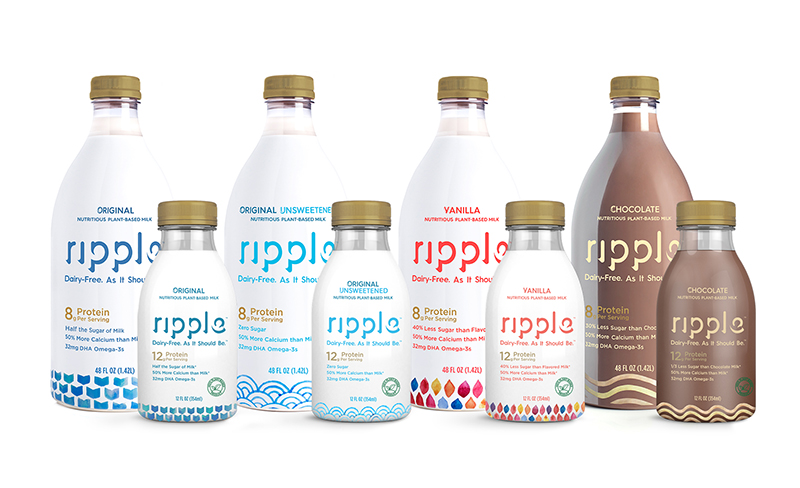
Dairy-Free Milk Range
Farming accelerators like Kimbal Musk’s Square Roots, Con10u2farms are doing similar things for indoor and urban farming and crop production. And I haven’t even started to scratch the surface of how new technology business models like MIT’s Open Agriculture Initiative (OpenAg), an open-source agricultural research lab on a mission to digitalise agriculture and make food production accessible to every citizen on the planet. (Watch this space for my next story on Open Ag). Even the Agricultural Development Bank of China, one of the country’s principal policy lenders, has allocated at least 3 trillion yuan ($450 billion) by 2020 to the modernization of China’s agriculture industry, state media mentioned in September of this year.
New Zealand vs. World
So the big questions to ask ourselves here in NZ is what are we doing to stay in the race? And with technology, science, R&D, VC accelerating and converging at such exponential rates blowing the traditional pasture based model of agriculture out of the water, how does New Zealand compete? Sorry to rain on anyone’s parade, but smart farming and food innovation based on pasture based milk products do not count.
New Zealand’s Foodbowl, an open access national network of science and technology resources, funded largely by Callaghan Innovation, is doing a smattering of work to support the growth of the Food & Beverage sector and promote innovative food science. Alexandra Allan, Foodbowl’s CEO, says initiatives include supporting a novel plant based meat protein start up that has the potential to serve as a healthy and ethical chicken alternative, as well as few early stage companies looking to commercialise food products using cricket protein. But frankly, simply not enough of this is going on.
According to Allan part of the reason why NZ has very little innovation going in the Ag 2.0 paradigm is that it is so costly for a NZ start up to validate the “safety” of new food products and systems of production, and that there’s a mine field of needless and innovation-hindering regulation that start ups have to navigate to even get a safe product to market. We can all thank our Ministry of Primary Industries (MPI) for that. It’s shortsighted paranoia around the safety of new products hitting the export markets, and inexperience in dealing with technology led food innovations like high pressure processing might be fine for protecting the NZ inc brand today, but it’s doing nothing but hinder our ability to build companies that can play in the new world of Ag 2.0.
Tauranga based Wharf42 is also helping NZ’s ag sector and key players to keep apace with the international agtech developments rapidly shaking up our local sector. Led by tech-veteran Peter Wren-Hilton, Wharf42 has partnered with Callaghan Innovation & NZTE for a second year to host a 3-day 2016 Silicon Valley AgTech Immersion Programme and conference to increase engagement between Silicon Valley investors and Kiwi tech companies looking to position themselves at the forefront of agriculture. Connected into Silicon Valley’s Plug and Play Tech Centre and Silicon Valley Forum, the programme facilitates NZ angel and venture investors to meet and build new relationships with key players leading the way in Agtech 2.0. “This initiative is designed to not only encourage our AgTech ecosystem to collaborate more closely together on home soil, but to sow the seeds of what’s possible by working together in larger offshore markets” says Wren-Hilton.
However well intentioned NZ players like Wharf42 the FoodBowl are, I still have my reservations. At least in terms of their ability to fully course-correct NZ towards agricultural competitiveness long term. Wharf42’s initiatives appear to be largely promoting Kiwi technologies designed with the traditional “farm” paradigm in mind. Robotics, drones and sensor technologies operating in a “real-world” and “connected farm” environment. An environment that might not even be relevant or exist in 15, or even 10 years from now. Yes these programmes may help to temporarily keep New Zealand’s head above water in the rapidly changing world of food and agriculture. But they are not enough. It’s not that we intend for New Zealand to become a failed agricultural state, but it seems our government, MPI and Callaghan think because we know how to get the most milk from our cows, package it up in pretty yoghurt containers and use apps on our farms, we are ahead of the world. But we aren’t.
Where to from here?
Does this mean New Zealand’s current agricultural system is quite simply doomed to become the new Detroit of agriculture? And if we are, where does that leave us and what are our options?
Rather than hindering entrepreneurs with red tape and resting on our laurels as world class dairy producers, Callaghan and other national industry advisories would be wise to refocus their efforts on retraining our up and coming children and millennials in STEM subjects. To focus on driving and backing technology development programmes so we too, can create an Impossible Foods or Perfect Day of our own. To focus on curbing the growth of dairy farm conversion. On investing in true long term valuing adding activity that our precious land, technological genius and entrepreneurial brains can provide. To focus on how we can insert ourselves into this future. The future of Ag 2.0. A future underpinned by technology.
This is where the real opportunities lie and what will help us retain our global competitiveness in the world of agriculture in the coming years. Not investing in developing apps for farmers that support the infrastructure of what will soon be out of business as the world of protein and plant agriculture shifts inwards and upwards.
Yes, it will be painful to watch the sun setting over one of our treasured economic mainstays forming the very essence of our rural – even cultural identity. But what will be more painful for New Zealand is if we allow denial of the rapidly changing technologically led agricultural and food paradigm, and our nostalgia for pasture-based farming paralyze our future economic progress. Despite the many palpable warning signs, it’s time to start thinking seriously about Plan B for New Zealand’s road ahead. Otherwise becoming the Detroit of Agriculture could fast become New Zealand’s nightmarish reality.

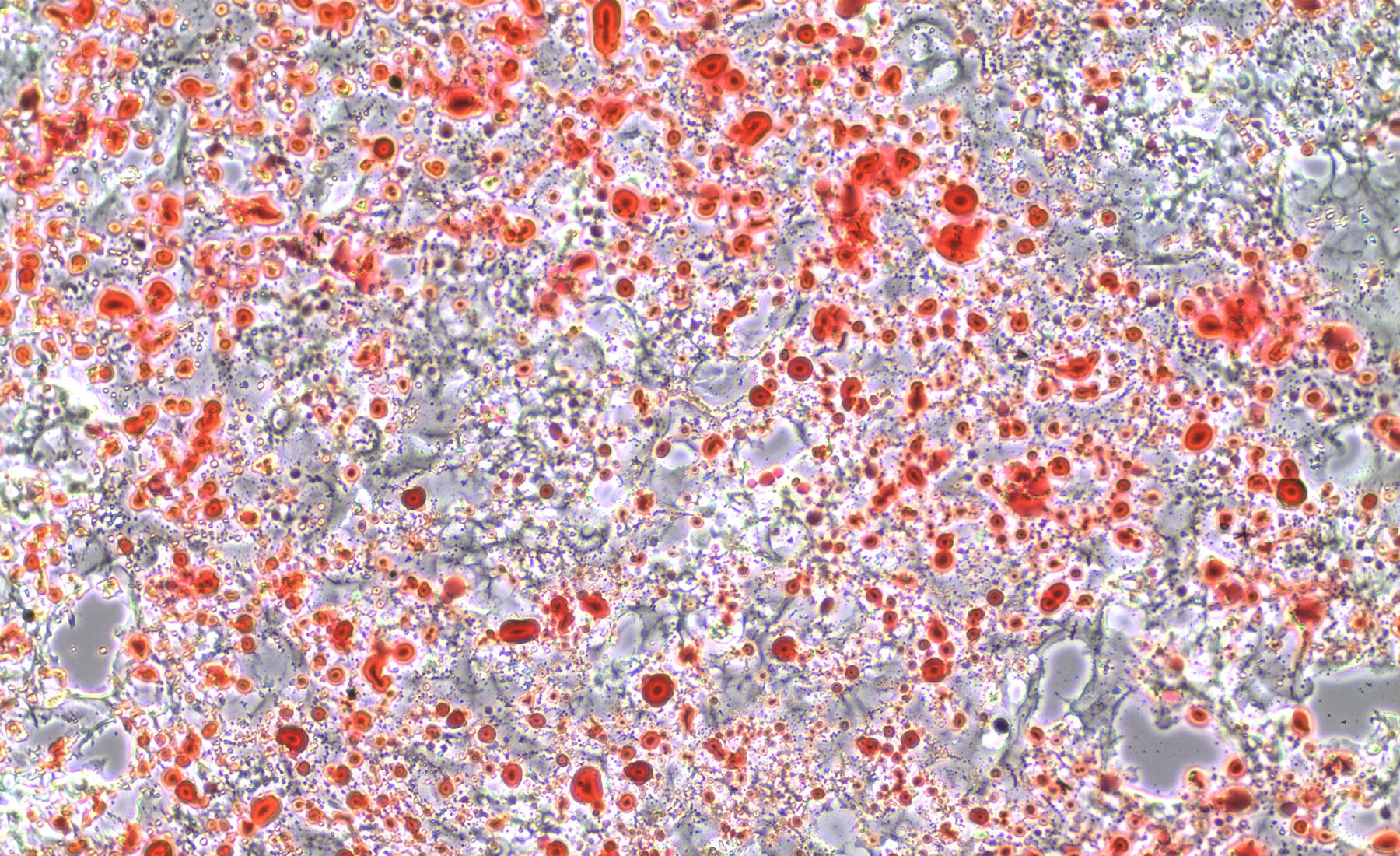


Leave a comment